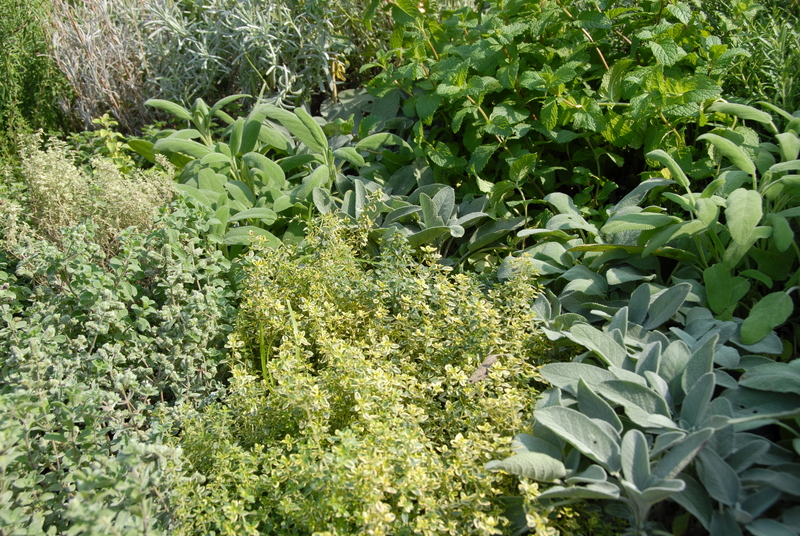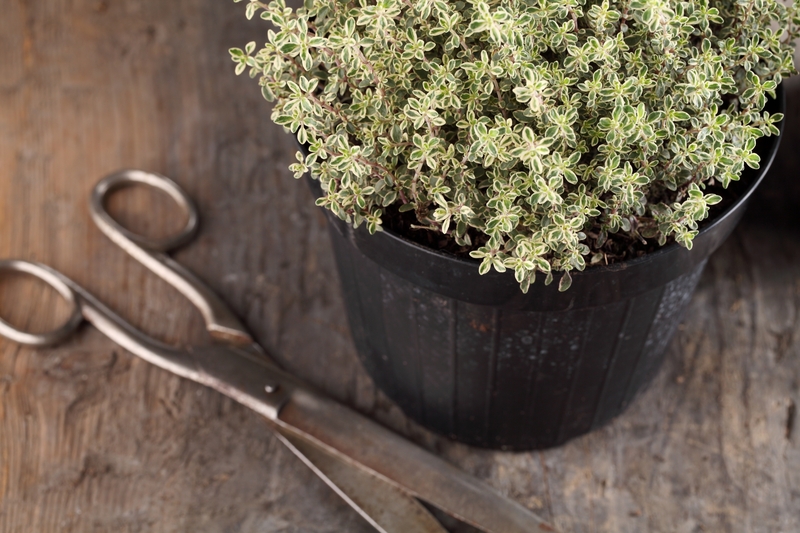Winter Strategies for Optimal Plant Health
Posted on 03/09/2025
Winter Strategies for Optimal Plant Health
As the chill of winter sets in, gardeners and plant enthusiasts everywhere face unique challenges. The serene beauty of frost and snow comes with risks that can compromise plant health. Implementing effective strategies during the cold months ensures optimal plant health throughout winter and sets the stage for vigorous growth in spring. This comprehensive guide delves deep into winter plant care tips, covering everything from hardy perennials to tender houseplants, so you can protect and nurture your green friends all season long.
Understanding Winter Stress on Plants
Winter conditions such as low temperatures, reduced sunlight, and fluctuating humidity can negatively impact both indoor and outdoor plants. Factors like frost, wind, and soggy soil further complicate plant survival in cold weather. Recognizing the types of stress your plants face is the pivotal first step toward creating an effective winter plant care routine.
- Freeze damage: Water inside plant cells expands when frozen, potentially rupturing cell walls.
- Desiccation: Harsh winds and dry indoor air can cause leaves to lose moisture faster than roots can replace it.
- Reduced photosynthesis: Shorter days and lower light intensity slow down plant metabolism and growth.
- Root rot: Excess winter rain or melting snow can lead to waterlogged soil, suffocating roots.

Preparing Your Garden and Indoor Plants for Winter
Outdoor Plant Protection
Prepping your garden for winter is crucial. This involves several important steps to ensure that plants don't just survive, but thrive when spring returns.
- Mulching: Apply a 2-4 inch layer of organic mulch like straw, shredded leaves, or wood chips around the base of shrubs and perennials. Mulch acts as insulation, moderating soil temperature and preventing heaving (roots being pushed out by freeze-thaw cycles).
- Watering: Deeply water your plants before the ground freezes. Hydrated roots are better equipped to withstand freezing conditions.
- Pruning: Remove dead or diseased branches to prevent snow and ice damage and reduce overwintering pests.
- Wind barriers: Use burlap screens or windbreaks for sensitive or newly planted shrubs to protect against moisture-sapping winter winds.
- Covering tender plants: In regions with harsh winters, use frost cloths or garden blankets to shield particularly delicate species on especially cold nights.
Optimizing Houseplant Health in Winter
Indoor plants also experience stress during the winter. Shorter days, dry air, and cooler temperatures can lead to poor growth and increased vulnerability to pests. The following strategies ensure optimal indoor plant health through winter.
- Adjust watering: The majority of houseplants need less frequent watering in winter. Check soil moisture before watering to avoid root rot.
- Humidity: Counter dry indoor air by grouping plants, using a humidifier, or placing water trays near radiators.
- Light: Move plants to brighter locations, as natural light is weaker and less available in winter. Clean dust from leaves to maximize photosynthesis.
- Avoid fertilizing: Most houseplants enter a period of dormancy during the cold months and don't need feeding until spring.
Top Winter Strategies for Optimal Plant Health
1. Mulching Matters
Mulch is your garden's best friend in winter. It doesn't just insulate roots; it retains soil moisture and suppresses weeds. For trees, keep mulch away from the trunk to prevent rot and rodent damage.
2. Mindful Watering
While overwatering is a common winter issue, under-watering is risky if soils dry out completely. In regions with dry winters, check soil moisture levels regularly and water when needed, especially evergreens which transpire throughout the season.
3. Shielding from Cold Winds and Frost
Creating temporary structures like windbreaks for outdoor plants or using cloches for young seedlings can mean the difference between survival and frostbite. Frost cloths provide a layer of warmth without smothering the plants.
4. Pruning with Prudence
Prune only when appropriate. Many trees and shrubs, including fruit trees, benefit from winter pruning because it reduces disease risk and encourages spring growth. However, avoid pruning spring-flowering shrubs now, as you might remove delicate flower buds.
5. Managing Indoor Plant Environments
Protecting your houseplants during the winter requires paying attention to their microenvironment. Avoid placing plants near drafty windows or radiators, and rotate them to ensure even light exposure. Periodically check for signs of spider mites or fungus gnats, as these pests can thrive in dry indoor conditions.
Best Practices for Overwintering Perennials and Bulbs
Perennial plants and bulbs have specific requirements for safe overwintering. Here's how to give them the best chance to reemerge stronger in spring:
- Cut back foliage only after it yellows and dies back naturally. The dead material helps feed the root system.
- Split crowded perennials in late fall or very early spring for better airflow and nutrients.
- Store tender bulbs like dahlias, cannas, and gladiolus indoors in a cool, dry spot after lifting from the ground.
Strategies for Container Plants in Cold Weather
Containerized plants are more vulnerable to cold stress, as roots are above ground level. Use these strategies for optimal winter plant health in pots:
- Move pots against south-facing walls for added warmth.
- Wrap containers with insulating materials like bubble wrap, burlap, or old blankets.
- Group pots together for communal warmth and wind protection.
Monitoring and Addressing Winter Plant Pests and Diseases
Many pests overwinter in the soil or under debris. Good garden hygiene and vigilance can make a significant difference:
- Remove fallen leaves and dead plant matter to minimize overwintering pest populations.
- Inspect plants regularly for signs of fungal disease, including powdery mildew and botrytis.
- Maintain air circulation around indoor and outdoor plants to discourage mold and mildew.
Tips for Evergreen and Deciduous Plant Care in Winter
Evergreens
- Water well before freeze-up, as evergreens lose moisture through their needles or leaves even in winter.
- Spray with anti-desiccant, especially in exposed locations, to reduce moisture loss.
- Wrap sensitive evergreens in burlap if heavy snow, ice, or strong winds are forecast.
Deciduous Trees and Shrubs
- Protect young trunks from sunscald by painting with diluted white latex paint or using tree wraps.
- Add mulch, particularly for shallow-rooted species.
- Prune broken or damaged branches to prevent further injury and infection.
Special Considerations: Sudden Thaws and Late Frosts
Winter conditions are becoming increasingly unpredictable due to climate change. Sudden warm spells may trigger early budding, which late frosts can quickly damage.
- Keep frost covers on hand for late-season emergencies.
- Delay spring pruning until after the risk of frost passes, especially for tender new growth.
- Apply mulch early to insulate roots against both freezing and sudden thaws.

Planning Ahead: Building Resilience in Your Plant Selection
The most successful winter care strategies start long before the cold arrives. Consider investing in plants well-suited to your climate zone and microclimate, including native and hardy species. Winter plant health is bolstered by wise plant choice, minimizing risk of loss to extreme conditions.
- Select plants with winter hardiness ratings equal to or greater than your location.
- Invest in disease-resistant varieties to reduce wintertime infection.
- Mix evergreen and deciduous plants for visual interest and ecological balance all winter long.
Summary: Achieve Optimal Plant Health This Winter
Winter can be a challenging season for both outdoor and indoor plants, but with proactive strategies and careful planning, you can maintain optimal plant health throughout the colder months. Remember, the key elements are:
- Mulching to insulate and stabilize roots.
- Appropriate watering and humidity maintenance.
- Protection from wind, snow, and late frosts.
- Vigilant pest and disease monitoring.
- Correct pruning and thoughtful selection of resilient plants.
By adopting these winter strategies for plant health, you'll not only preserve your garden's integrity through the cold but also provide the strong foundation needed for lush growth in the coming spring!
FAQs on Winter Plant Health Strategies
- Q: When should I start preparing my garden for winter?
- A: Start preparations in late autumn before regular frosts begin. Mulching, deep watering, and pruning should all occur before the ground freezes.
- Q: Can I continue to fertilize plants in winter?
- A: It's best to halt fertilizing during winter. Most plants enter dormancy and won't utilize extra nutrients, which can in fact encourage weak, vulnerable growth.
- Q: How do I know if my plants are suffering from cold stress?
- A: Look for signs like wilted or shriveled leaves, discolored foliage, or mushy stems--these are indicators your plants need more protection.
Take these expert-backed winter plant care tips to heart--and watch your garden and houseplants flourish both now and when the thaw finally arrives!

